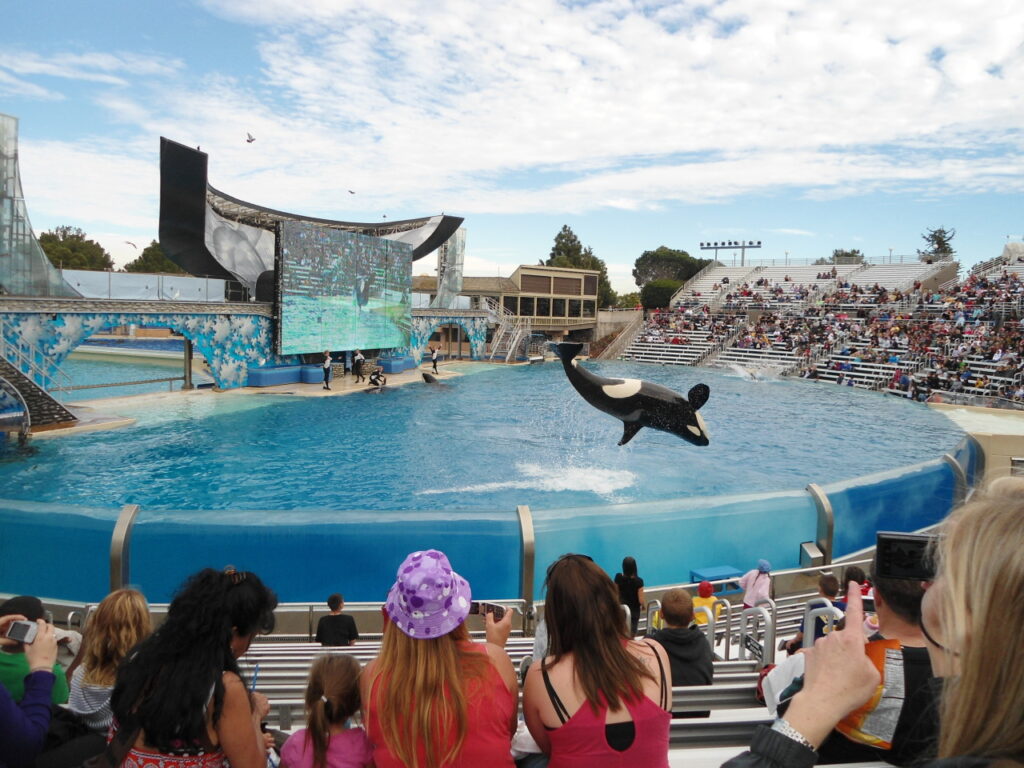SeaWorld, a globally recognized marine-themed park, has long been a topic of interest and controversy due to its facilities, particularly the size of its animal-keeping pools. For decades, these pools have housed some of the ocean’s most magnificent creatures, including orcas, dolphins, and other marine mammals. The dimensions and conditions of these enclosures have been at the heart of debates surrounding animal welfare, education, and entertainment. This article delves into the historical and present-day specifications of SeaWorld’s pools, shedding light on their size, purpose, and the controversies tied to them.

The Purpose of SeaWorld’s Pools
SeaWorld’s pools were designed to serve multiple purposes:
- Housing Marine Animals: These pools act as artificial habitats for animals like orcas, dolphins, and sea lions.
- Training and Shows: The pools are used for public performances where animals display learned behaviors.
- Rehabilitation: Some pools are designated for rehabilitating injured or sick marine life before their potential release into the wild.
- Research: They also serve as controlled environments for studying marine species.
While these goals appear noble, the question remains: Are the pools adequately sized for such large and dynamic animals?
The Size of SeaWorld’s Keeping Pools
SeaWorld’s keeping pools vary in size depending on their function. Historically, the largest pools have been those housing orcas (killer whales), known as “show pools” or “main tanks.” While specific dimensions vary across SeaWorld parks, some standard features are worth noting:
- Orca Pools:
- Typical dimensions range between 150-220 feet in length, with a depth of about 36-40 feet.
- The volume often exceeds 7 million gallons of water.
- Despite their size, these pools are minuscule compared to the vast oceans that orcas traverse in the wild, where they can swim up to 100 miles a day.
- Dolphin Pools:
- Dolphin enclosures are smaller, generally spanning 100-150 feet in length with a depth of around 12-18 feet.
- These pools typically hold 2-3 million gallons of water.
- Rehabilitation Pools:
- Designed to house animals temporarily, these are often much smaller, focusing on accessibility for veterinary care rather than spacious living conditions.
- Training and Backstage Pools:
- These pools are used to acclimate animals to new behaviors or quarantine them.
- Their size is often criticized as inadequate since they prioritize practicality over animal comfort.
Comparisons to Natural Habitats
The ocean is the natural habitat for orcas and dolphins, offering them unlimited space, dynamic ecosystems, and environmental stimuli. For example:
- Orcas: In the wild, these apex predators inhabit territories stretching across thousands of miles. They dive to depths of over 500 feet and thrive in pods with complex social structures.
- Dolphins: Known for their playful and curious nature, dolphins swim in pods across wide ranges, diving to depths of up to 900 feet.
SeaWorld’s pools, no matter how large they appear, pale in comparison to the freedom and diversity of the open ocean. Critics argue that the pools limit the animals’ ability to exhibit natural behaviors, such as hunting and socializing in large groups.
Criticism and Controversy
The size of SeaWorld’s pools has been a focal point for animal welfare advocates for decades. Documentaries like Blackfish brought widespread attention to these concerns, questioning whether the pools are humane for highly intelligent and social creatures like orcas.
- Psychological Impact: Confinement in relatively small pools has been linked to stress, depression, and aggression in captive animals. Orcas, for example, have been observed exhibiting dorsal fin collapse—an abnormality rarely seen in the wild.
- Physical Constraints: Restricted movement and lack of exercise in smaller enclosures can lead to health issues, such as weakened muscles and joint problems.
- Ethical Debates: Critics argue that keeping marine animals in such environments for human entertainment is ethically indefensible.
In response to public backlash, many animal rights organizations have called for SeaWorld to expand its facilities or transition to sea sanctuaries, where animals can experience more natural conditions.
SeaWorld’s Response and Recent Changes
SeaWorld has acknowledged public concerns and implemented some changes over the years:
- Ending Orca Breeding Programs: In 2016, SeaWorld announced it would no longer breed orcas in captivity, making the current generation the last to live in its parks.
- Blue World Project: Proposed as a plan to expand orca habitats significantly, this initiative was eventually scrapped due to financial and regulatory challenges.
- Focus on Education: SeaWorld has shifted its messaging to emphasize education and conservation rather than entertainment.
While these efforts represent progress, they fall short for those advocating for the complete elimination of captivity.
The Future of Marine Animal Enclosures
The debate over the size of SeaWorld’s keeping pools is part of a broader conversation about the ethics of marine mammal captivity. Alternatives like sea sanctuaries provide hope for a more humane future. These sanctuaries are large, ocean-based enclosures that offer animals a taste of their natural environment while still allowing for human care when necessary.
Organizations worldwide are now working to transition marine mammals from small pools to these expansive sanctuaries, balancing their well-being with conservation and research efforts.
Conclusion
SeaWorld’s keeping pools, while substantial by human standards, remain inadequate for replicating the boundless freedom of the ocean. The controversy surrounding their size underscores a growing societal shift toward prioritizing animal welfare. As public awareness continues to grow, the future of marine animal captivity will likely hinge on innovative solutions that respect both the creatures and the educational goals of marine parks.
By addressing these concerns, SeaWorld and similar institutions have an opportunity to redefine their legacy—not as entertainment providers, but as true stewards of the marine world.
